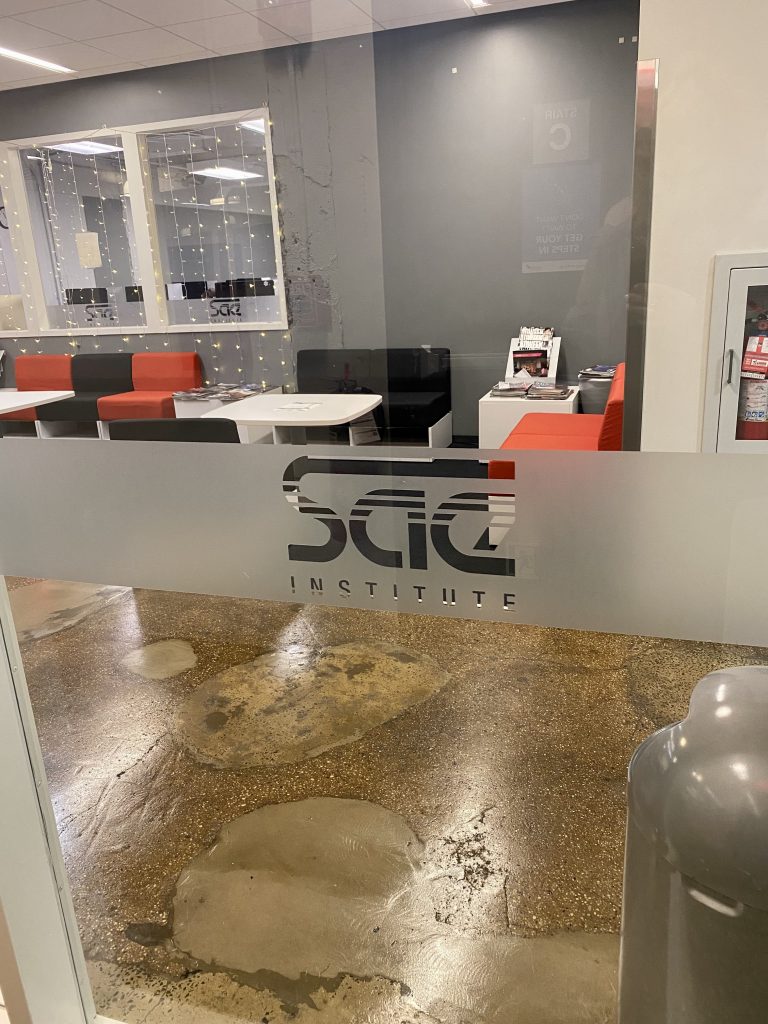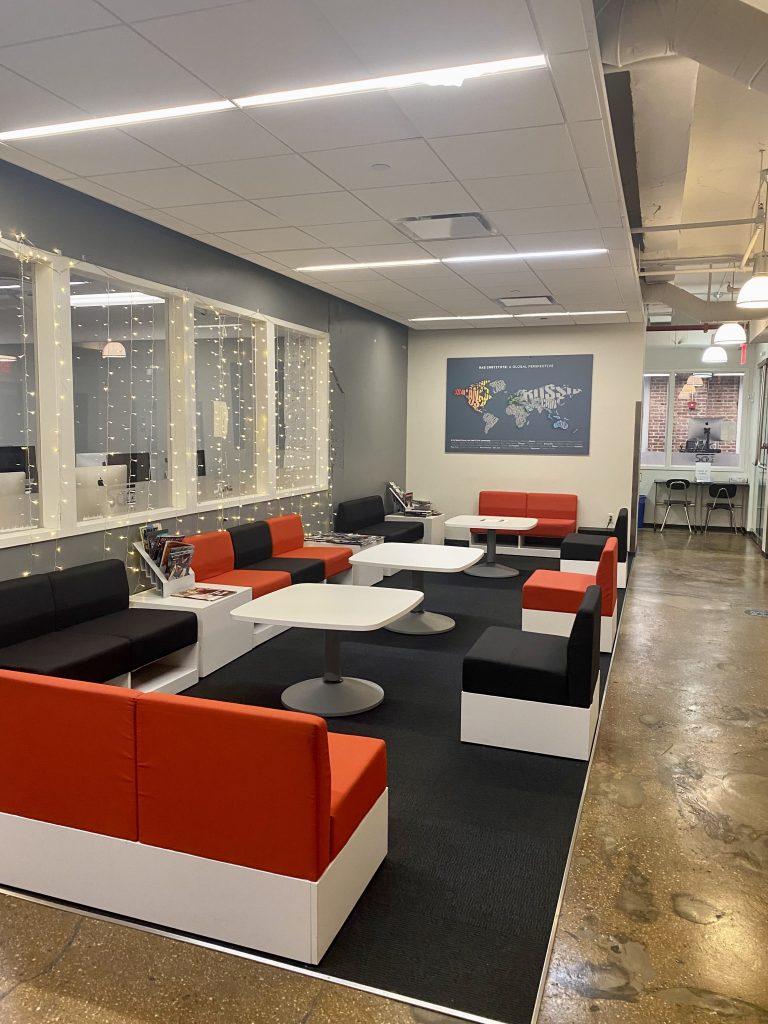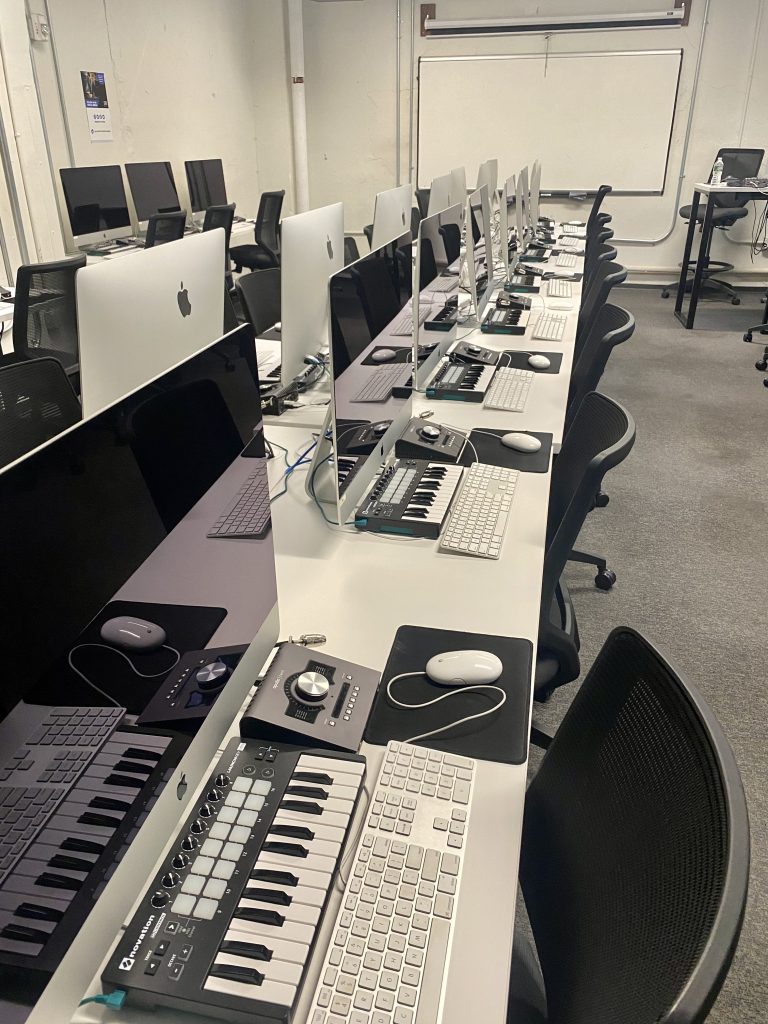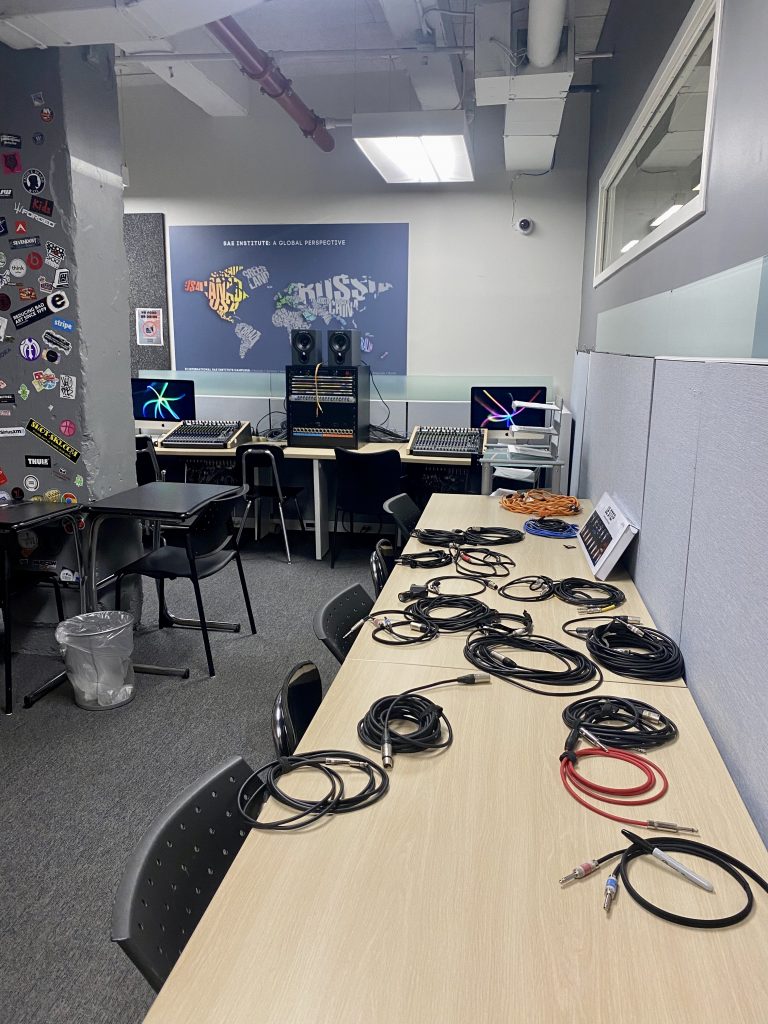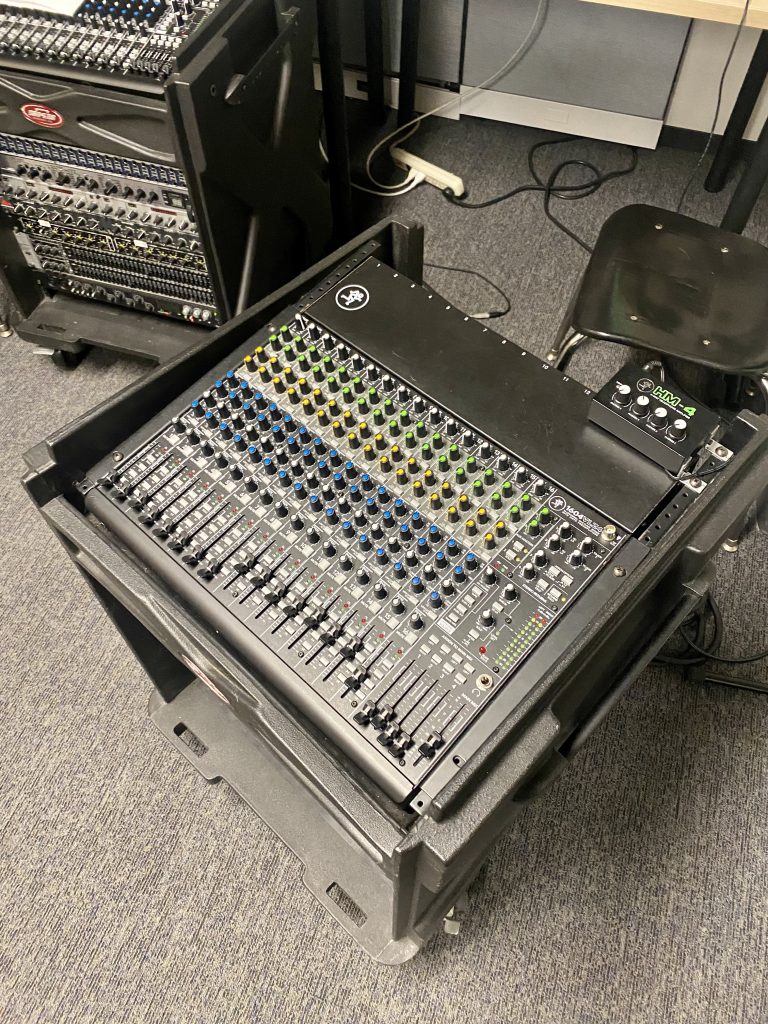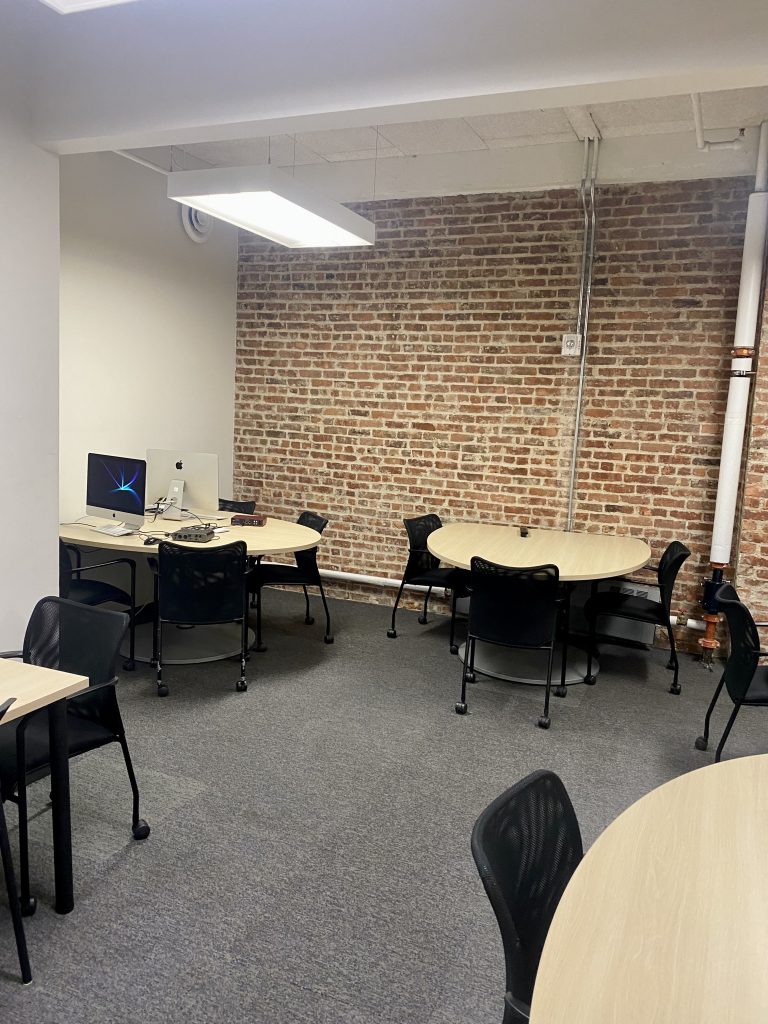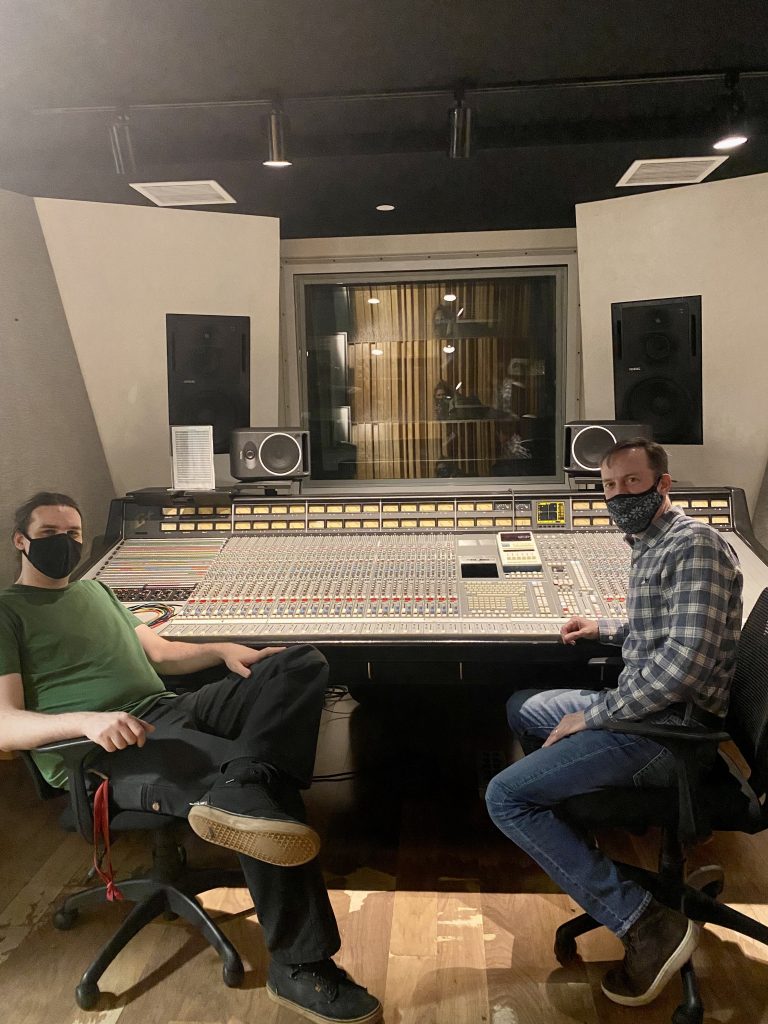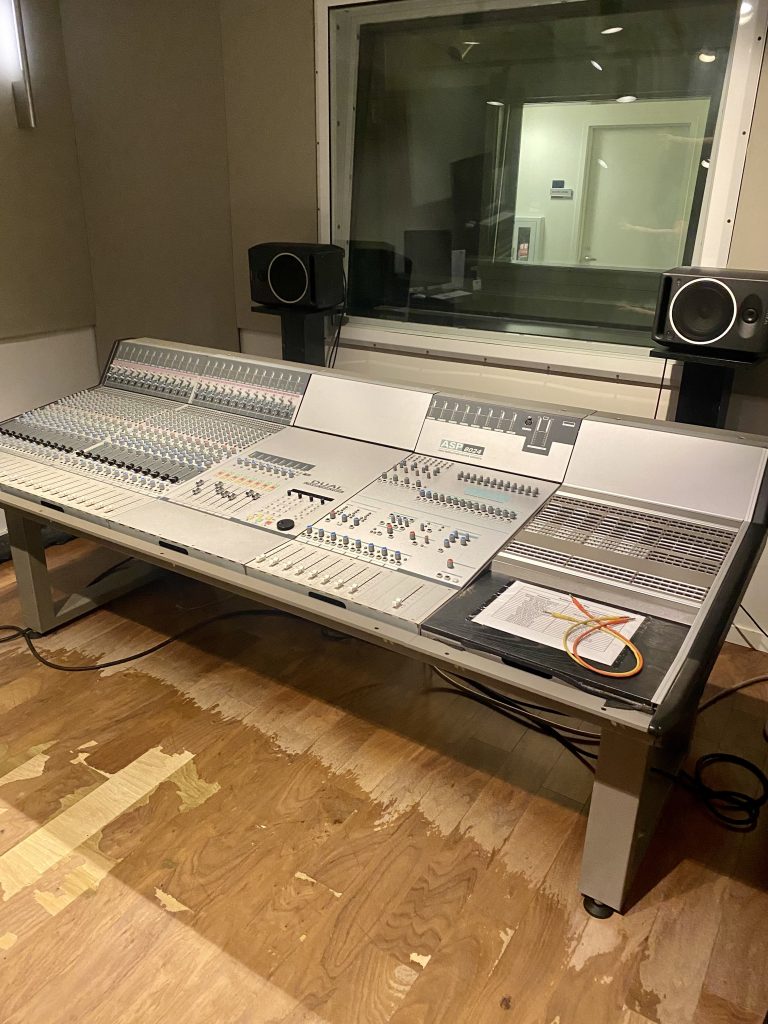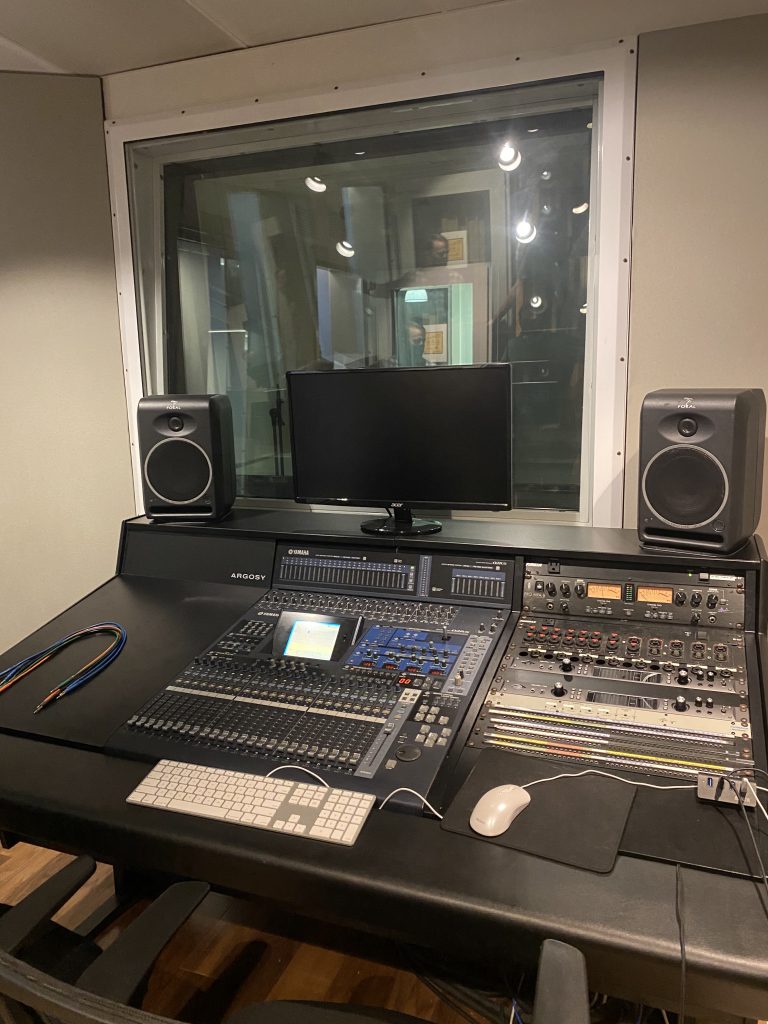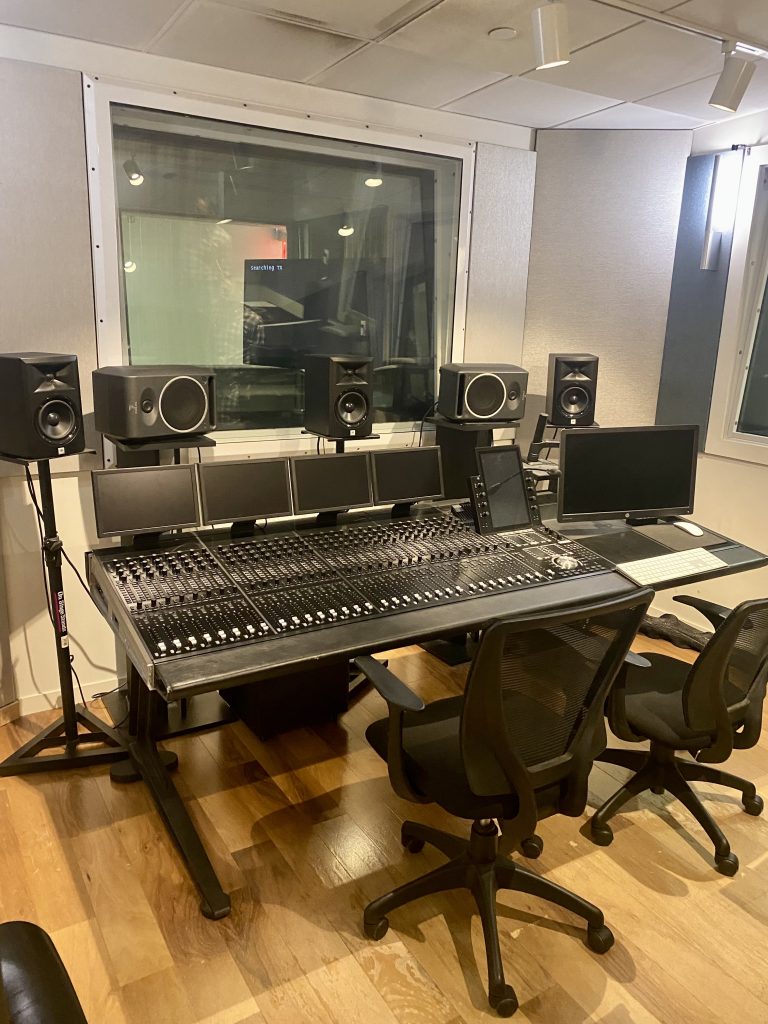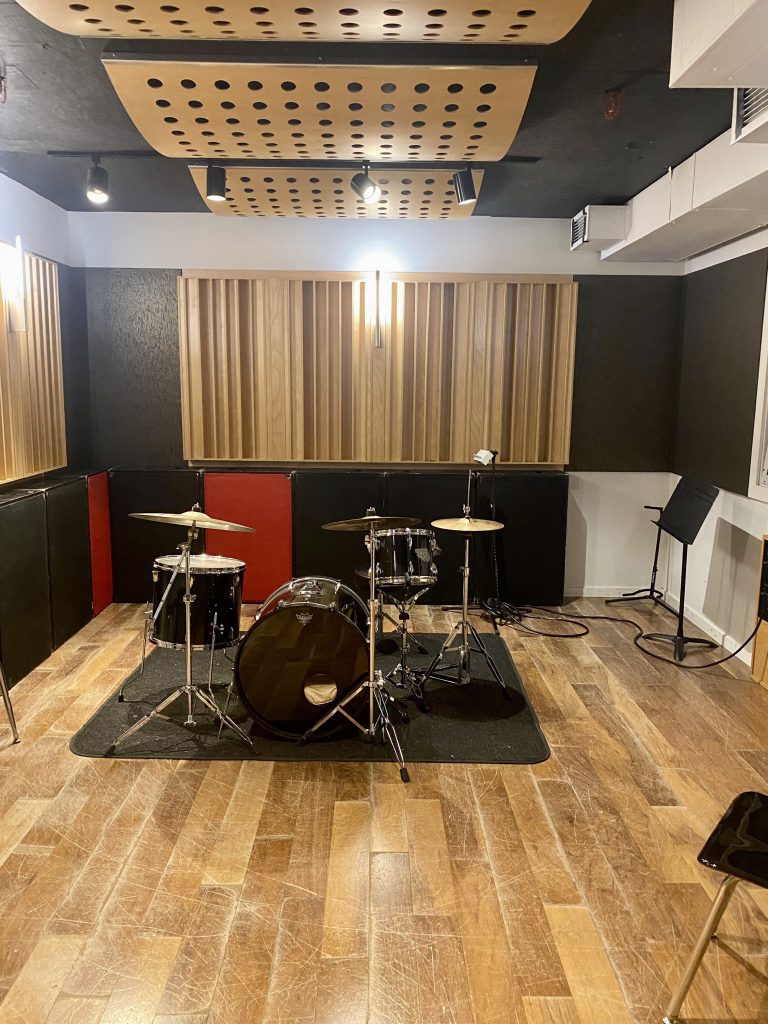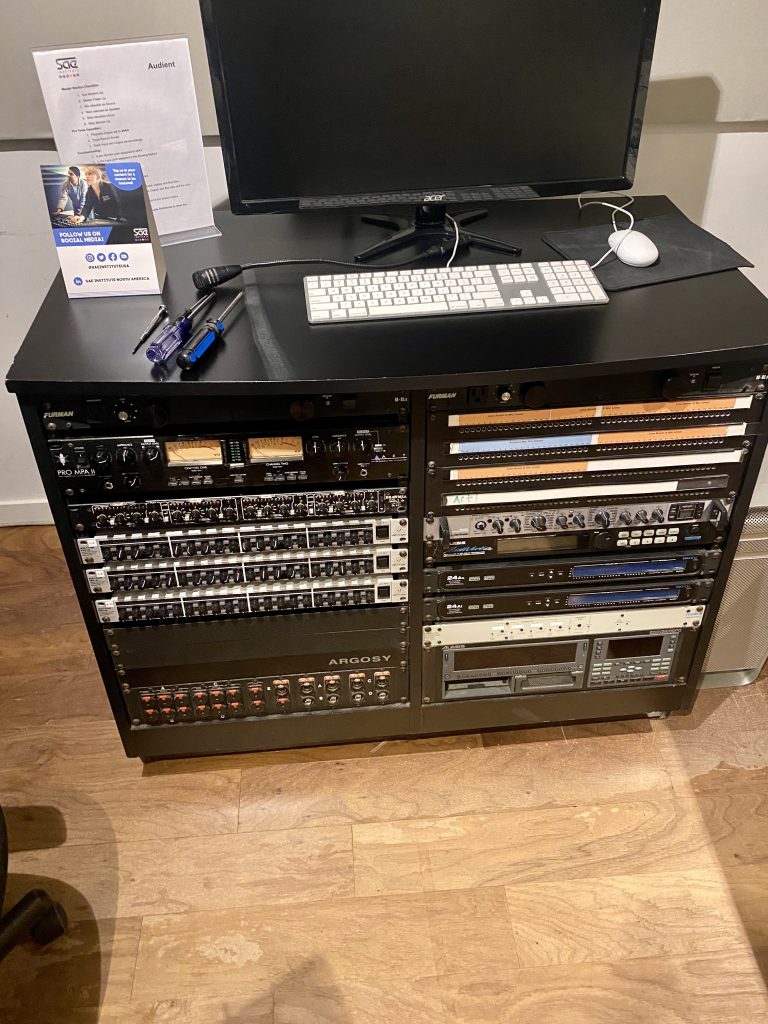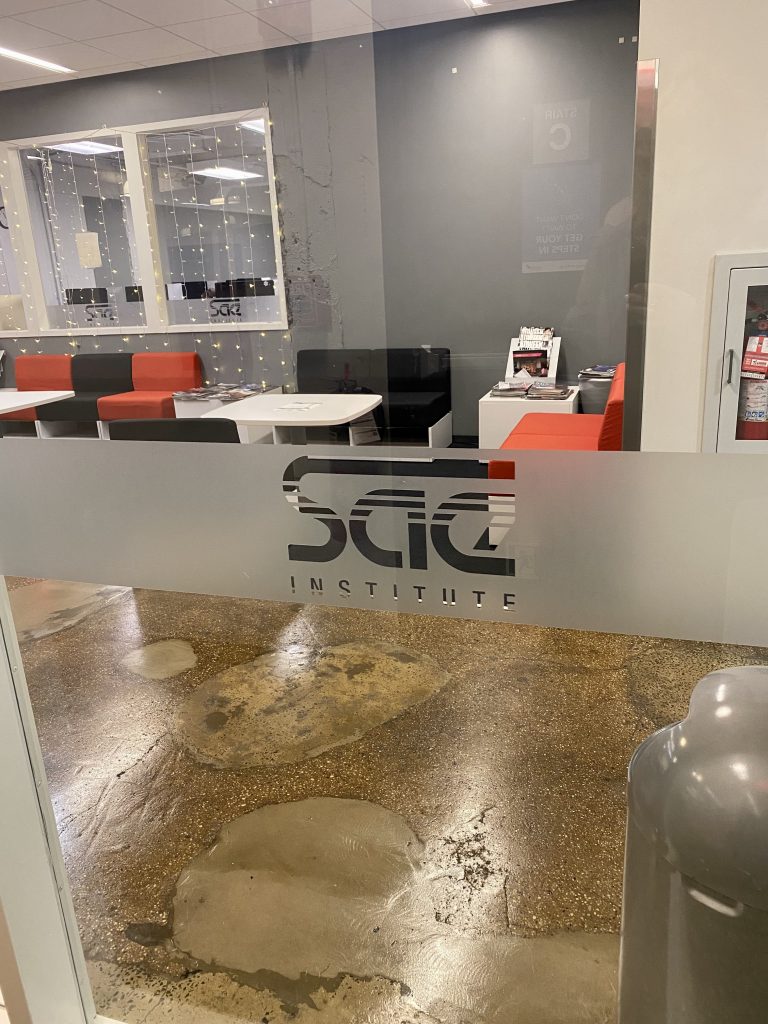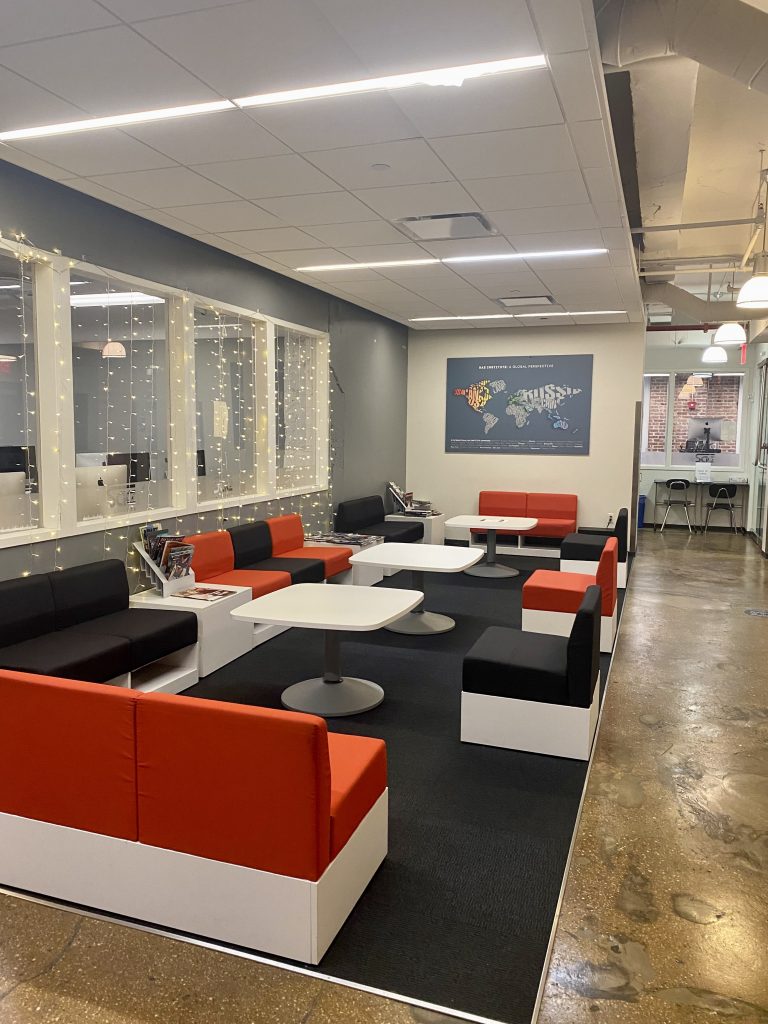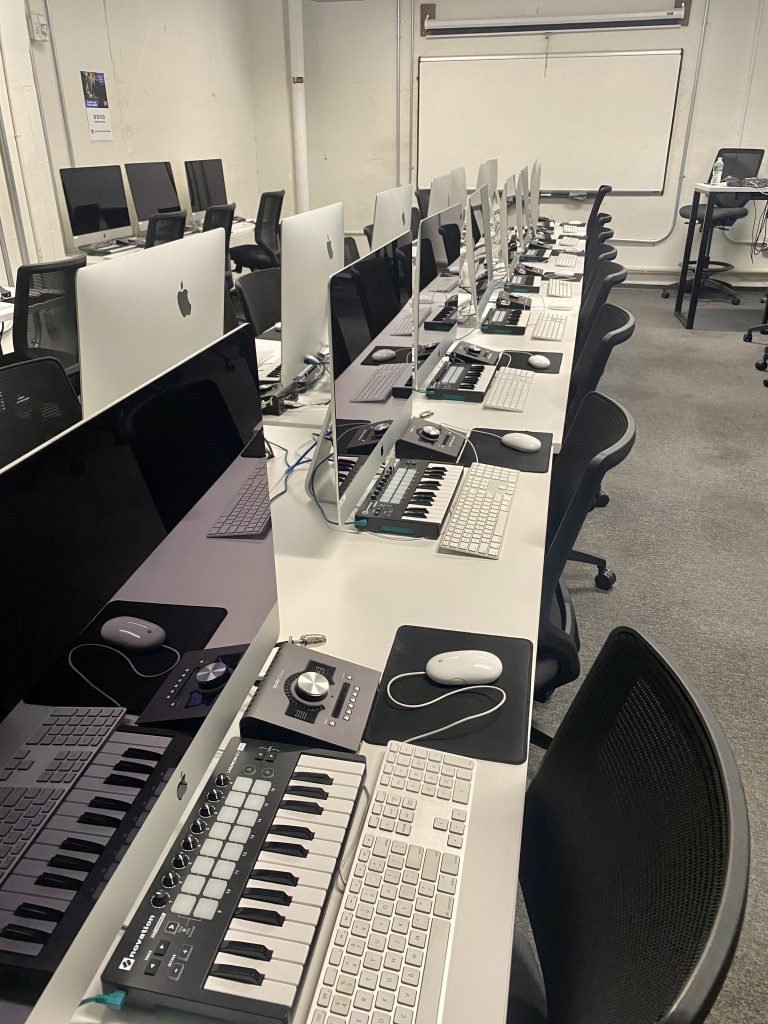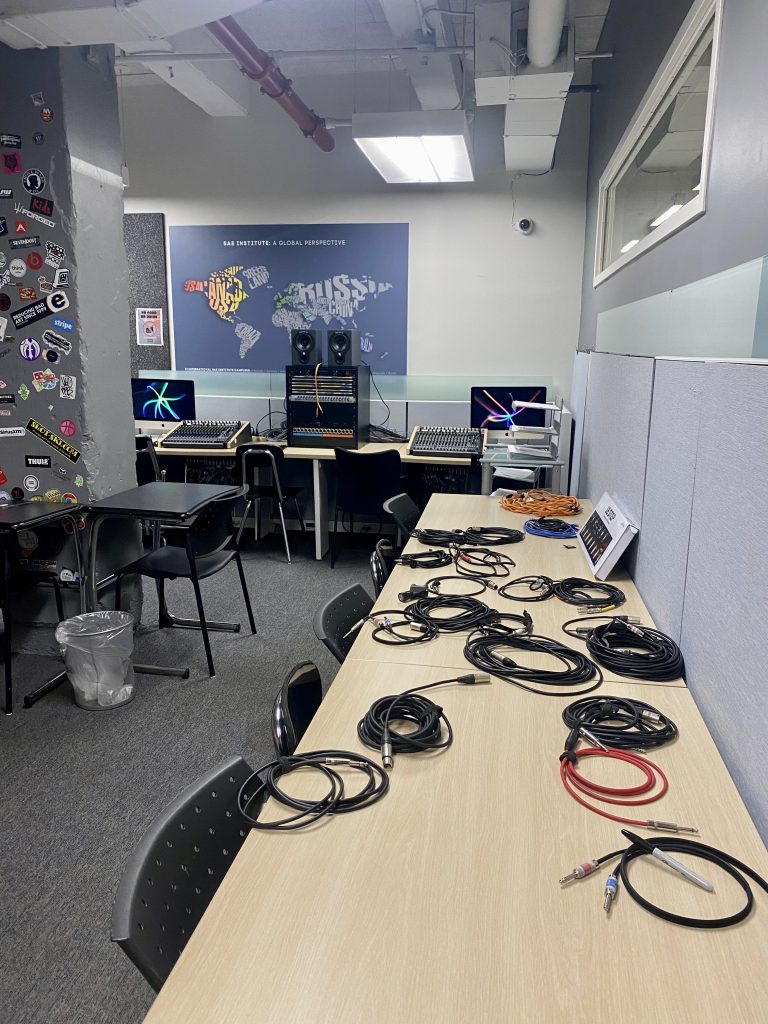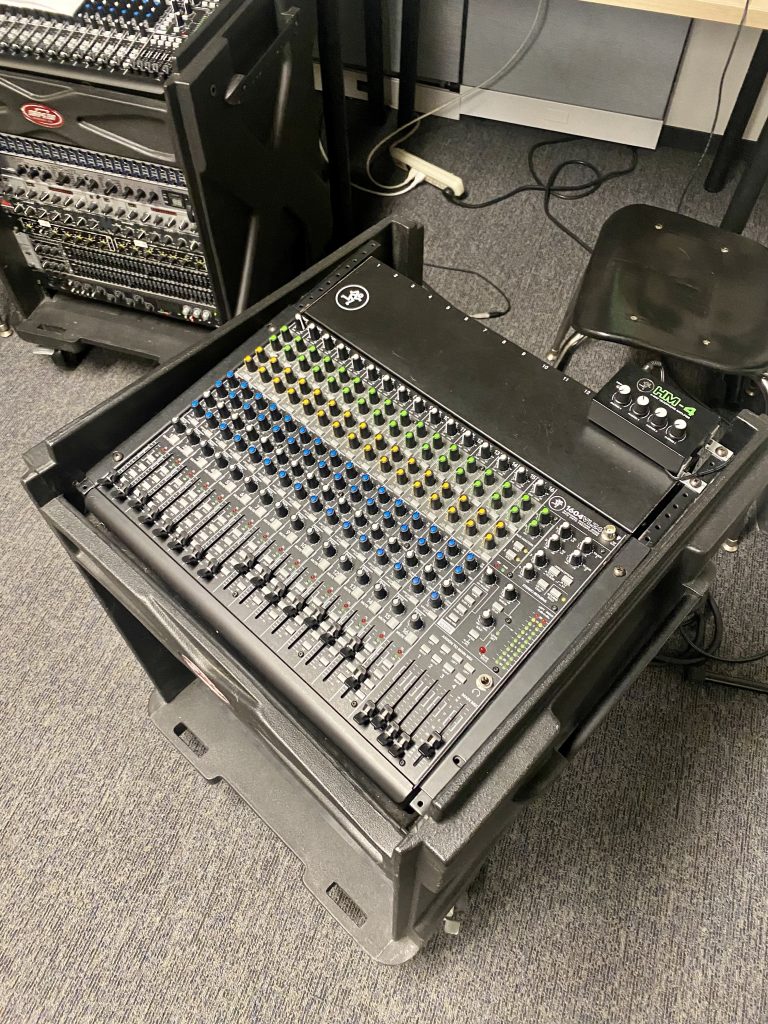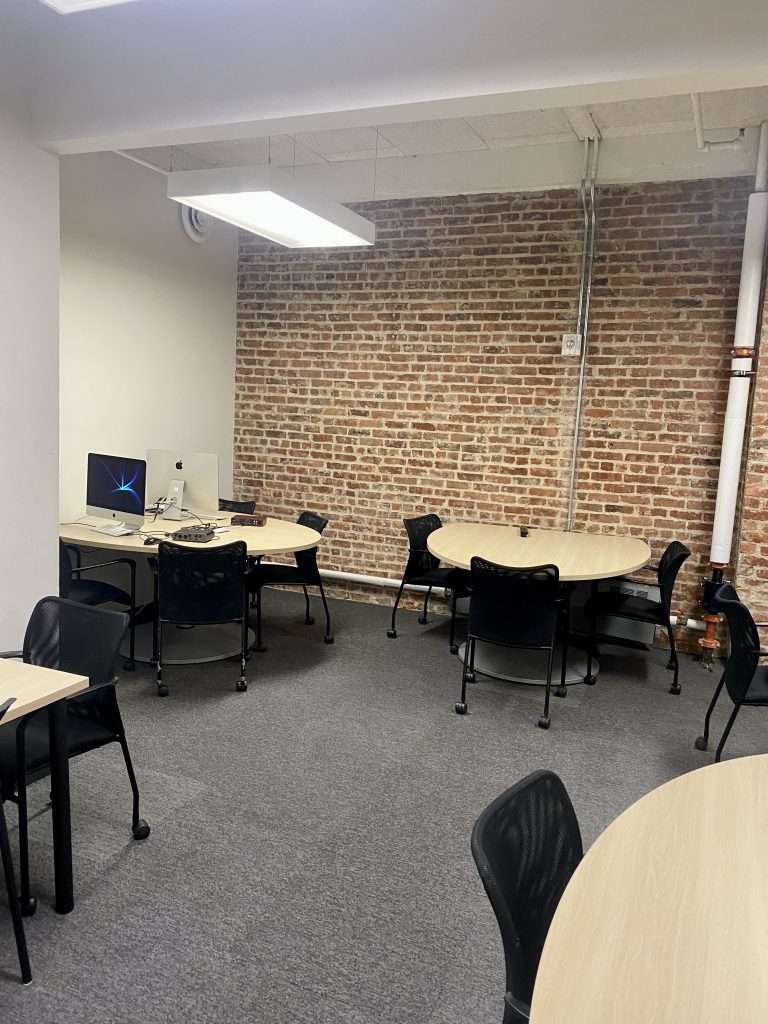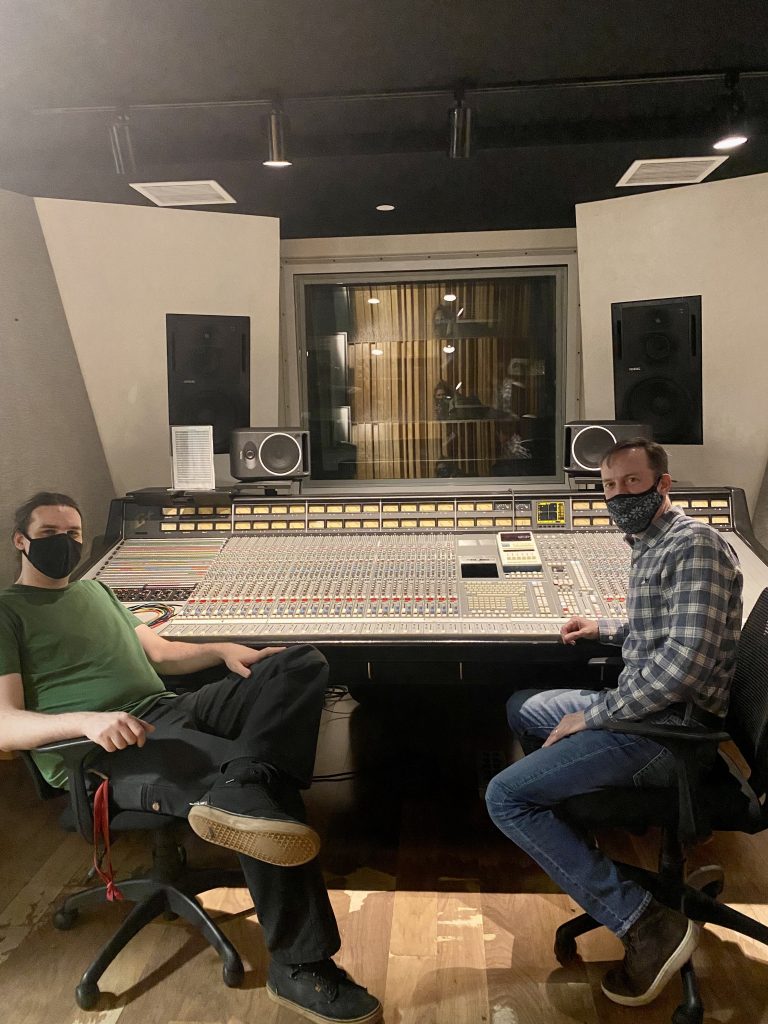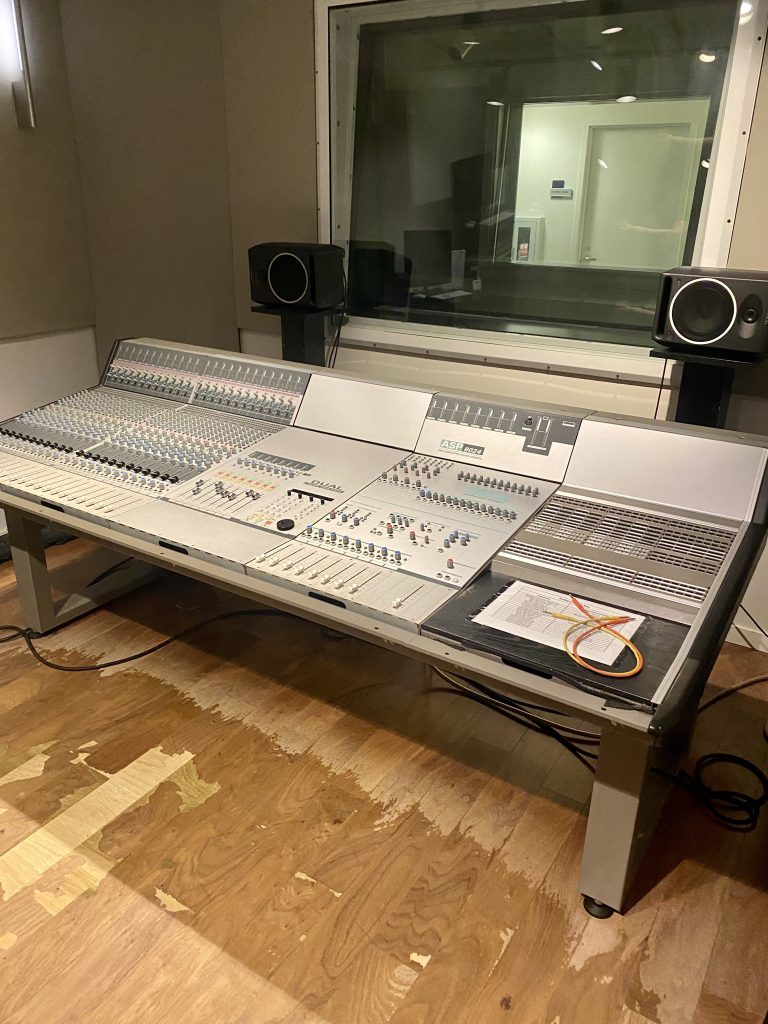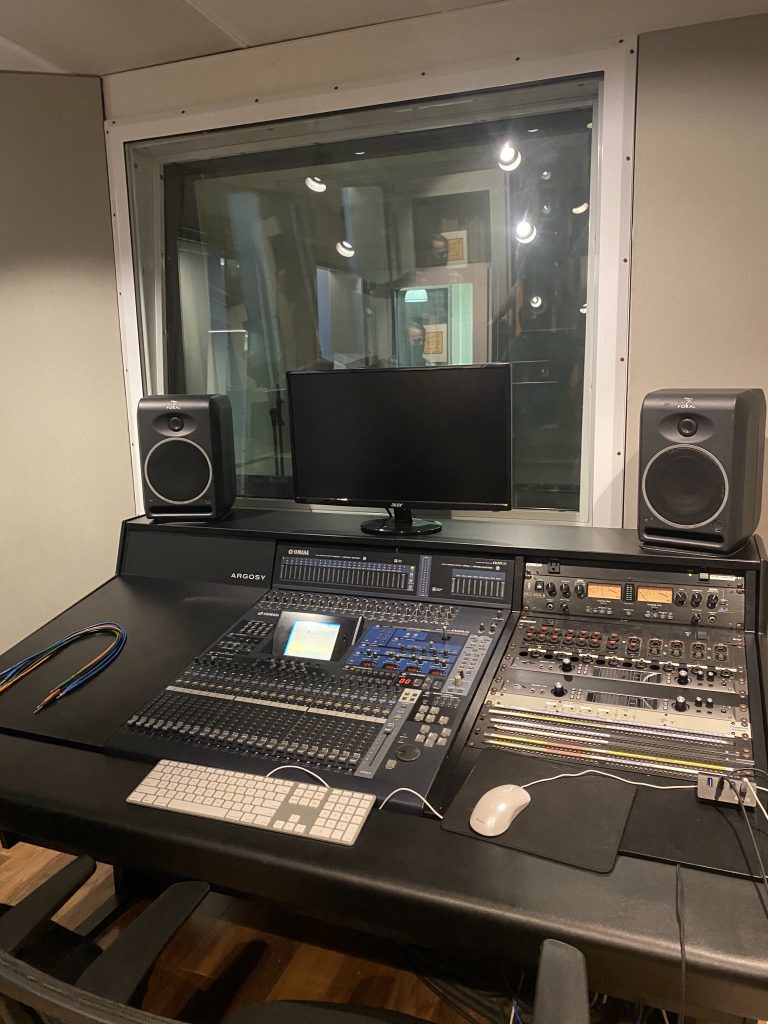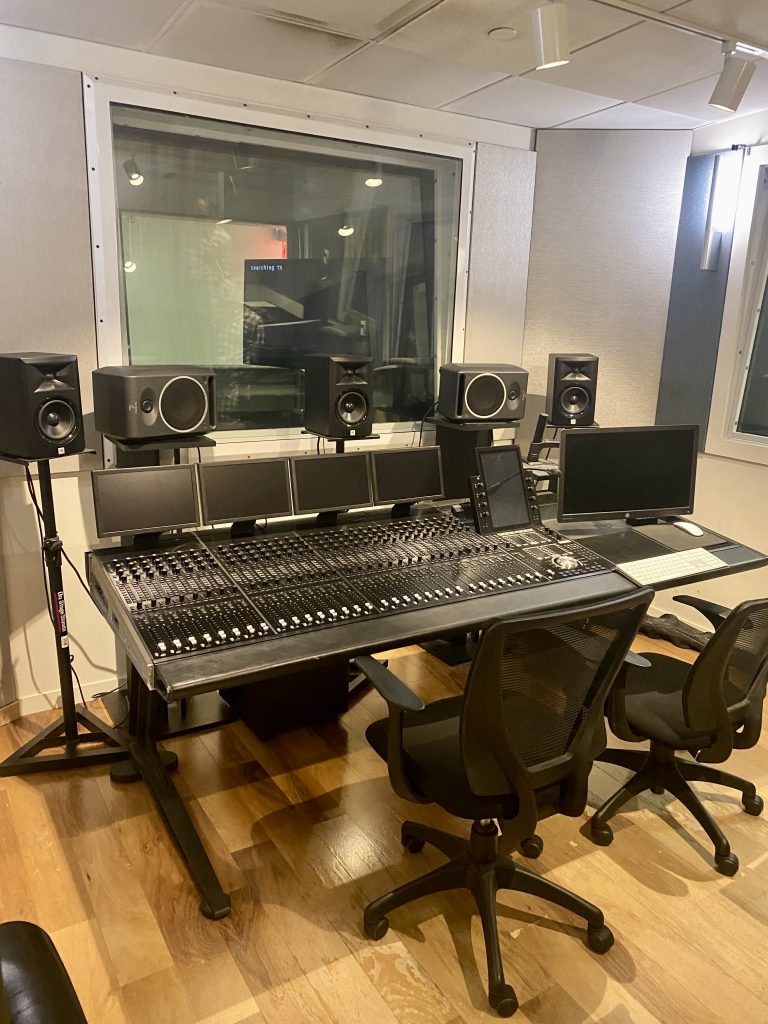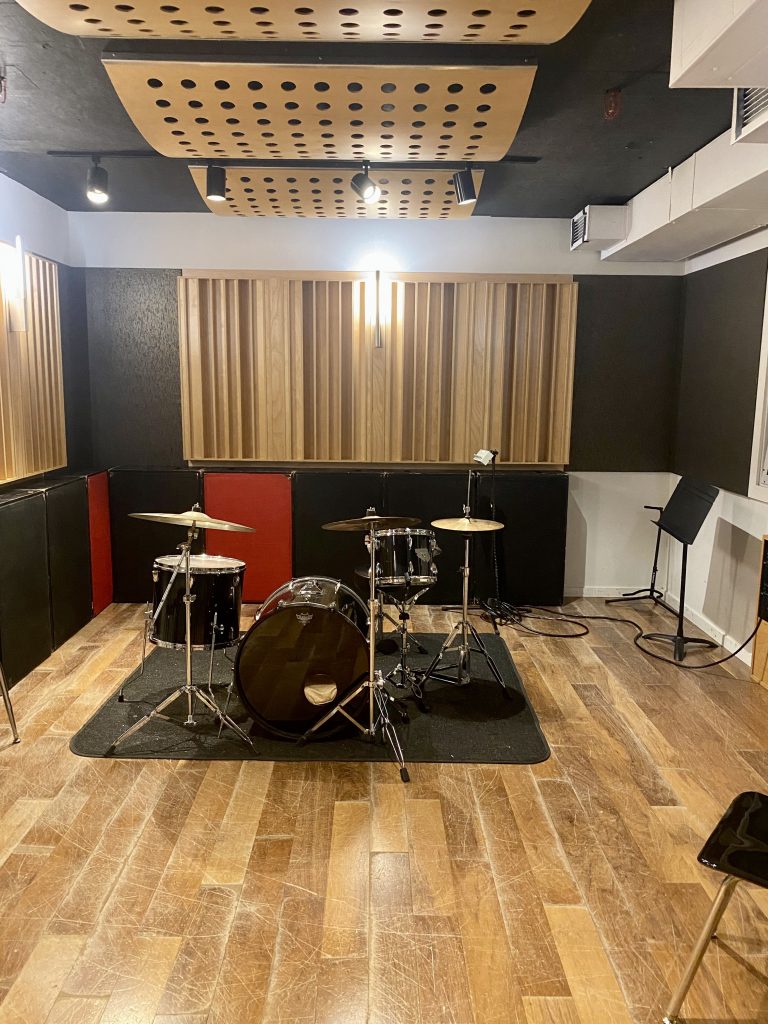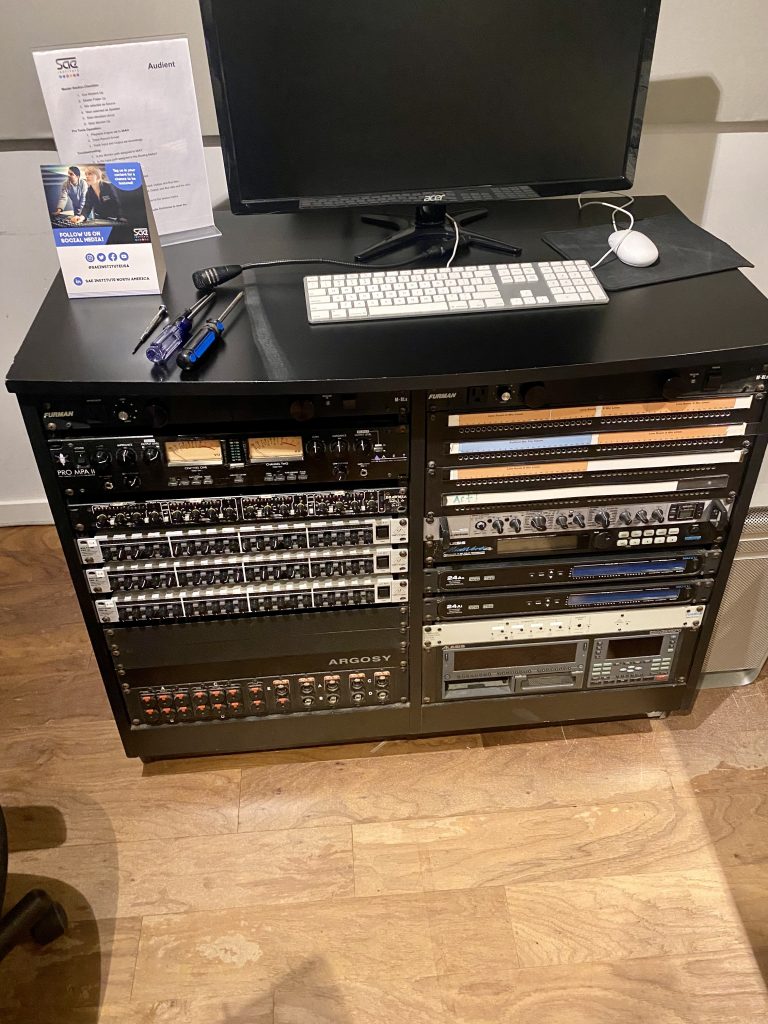SAE NYC (D)
Es war der erste Tag nach den Weihnachtsferien an dem er Campus wieder öffnete, aber auch der erste Tag an dem die Studenten aufgrund der Covid-Situation in der Stadt wieder ins E-Learning geschickt wurden. Campus Director Gary Williams empfing mich daher mit einem Fiebermesser in der Hand – man kann nie vorsichtig genug sein. Ich bin sehr dankbar, dass er sich trotz der Umstände die Zeit genommen hat, mir eine Führung durch den Campus zu geben.
Mitten im angesagten Stadtviertel Chelsea, beheimatet im 4. und 5. Stock eines hohen, alten Backsteingebäudes befindet sich die SAE New York. Wie im letzten Post zu erklärt wird hier das „Audio Technology Diploma“ auf der Basis eines Clock Hour Systems angeboten. Die 12-Monatige Ausbildung wird in 4 Module unterteilt und umfasst Signal Flow Basics, Producing, Recording, Post Production für Film und Video, sowie Tontechnik in der Live-Branche gelehrt.
Die 6 Klassenräume sind an jedem Platz mit Apple Rechnern, Apollo Twin Interfaces und Midi-Keyboards ausgestattet. Aufgrund des erwähnten Schulsystems verbringen die StudentInnen sehr viel zeit am Campus und nutzen diese Plätze nicht nur während der Unterrichtseinheiten, sondern auch für Übungen und Projektspezifische Arbeiten. Außerdem bieten eine gemütliche Lobby, eine Aufenthaltsraum mit Küchenzeile, Getränke- und Snack-Automaten, sowie ein separater Bereich mit Arbeitsplätzen im Industrial-Look Platz für die rund 300 StudentInnen.
Neben den Klassenzimmern umfassen die Räumlichkeiten 5 Live Räume, die über die Wallboxen mit allen Regieräumen verbunden werden können. Zwei davon sind mit analoge Konsolen ausgestattet (SSL 4000 G+ 32 channels und Audient ASP8024 24 channel – gerade in Reparatur), eine mit einer digitale Konsole (Yahama 02R Digital Console), eine Postproduction Suite mit einem DAW controller (Avid S6 M40) und vier production suites.
Studenten bei der Arbeit konnte ich, bis auf ein paar Ausnahmen, keine antreffen. Dafür aber Josh Naeder (links im ersten Bild), einer der Audio Supervisor, der gemeinsam mit Gary (rechts im ersten Bild) einige meine Fragen beantwortete.
Laut den beiden kommen die meisten Studenten aus der Gegend um New York und ein Großteil von ihnen bleibt auch hier. Hier gibt es definitiv viele Möglichkeiten nach der Ausbildung, wie zum Beispiel viele Live-Jobs in . Ausgebildete TontechnikerInnen sind New York auch im Bereich audiovisuelle Medien bei Firmen sehr gefragt. Auf meine Frage nach dem großen “Studiosterben” erklärt John, dass es im Grunde überall langsam stirbt – sogar in New York, aber es gibt noch große Studios und wenn man sich ins Zeug legt hat man sehr wohl die Chance in einem zu landen.
Spannend war für mich auch die Frauenquote. Laut John und Gary beträgt diese an der SAE New York etwa 15%, das ist fast dreimal so viel wie in Wien. Was internationale Studierende anbelangt sind derzeit zwei (einer aus Frankreich, einer aus Ägypten) am Campus eingeschrieben. Das Hauptaugenmerk der meisten Studierenden heutzutage liegt, wie in auch deutschsprachigen SAEs, auf dem Produzieren von Musik.
Eine weitere interessante Tatsache am Campus ist, dass es einen Berater gibt, der Studierenden bei der Suche nach einem Praktikumsplatz in der Industrie unterstützt, obwohl ein solches keine Voraussetzung für das Diplom ist. Er fungiert als Bindeglied und arbeitet mit Studios wie Quad Studios, NYC Studio 17, Mansion Recording Studios, aber auch Unternehmen, die audiovisuelle Inhalte erstellen, wie dem Fitnessunternehmen Lulu Lemon und sogar mit Wohltätigkeitsorganisationen wie einer Blindenschule, die Hörbücher erstellt zusammen.
Die Schule bietet keine Unterkunft für die Studierenden an, eine weitere Beraterin unterstützt jedoch gerne bei der Suche und insbesindere, wenn Probleme oder Schwierigkeiten im Verlauf des Kurses auftreten.
SAE NYC (E)
I was visiting the campus the day it reopened after Christmas break, but also the first day on which the students were sent back to e-learning due to the COVID situation in the city. Campus Director Gary Williams welcomed me with a thermometer in his hand—you can never be too careful. I am very grateful that, despite the circumstances, he took the time to give me a tour of the campus.
The SAE Institute New York is located in the middle of the trendy Chelsea district, on the 4th and 5th floors of a tall, old brick building. As explained in the last blogpost, students are studying for an “Audio Technology Diploma” which is based on a clock hour system. The 12-month training is divided into 4 modules and includes signal flow basics, producing, recording, post production for film and video, as well as live audio engineering.
The 6 classrooms are equipped with Apple computers, Apollo twin interfaces and midi keyboards. Due to the schooling system, the students spend a lot of time on campus and use these spaces not only during the lessons, but also for exercises and project-specific work. In addition, a cozy lobby, a lounge with a kitchenette and vending machines as well as a separate area with workspaces offer room for over 300 students.
In addition to the classrooms, the facilities include 5 live rooms that can be connected to all control rooms via wall boxes. Two of them are equipped with analog consoles (SSL 4000 G + 32 channels and Audient ASP8024 24 channel), one with a digital console (Yahama 02R Digital Console), a post-production suite with a DAW controller (Avid S6 M40) and four production suites.
I couldn’t meet any students at work due to the homeschooling, but John Naeder (left in the picture), one of the audio supervisors, was available to answer some of my questions alongside Gary (right in the picture).
According to them, most of the students are from the area around New York and a big part of them end up staying here after getting their diploma. There are definitely plenty of job options in the city, such as live-sound jobs. New York is big in audiovisuals too and there are also a lot of corporate gigs around the city. When I asked about the dying of recording studios John declared that it is basically happening everywhere, but New York is still in the game and if students put in a lot of effort, they might still end up working in a recording studio in New York.
Another interesting fact for me was the female quota which is about 15% at SAE New York – almost three times as much as in Vienna. As for international students, currently there are two (one from France, one from Egypt) out of 300 active students. The main focus of many students nowadays, just like in middle European SAE Institutes, lies in producing.
Among the campus staff, students can contact a Career Services adviser who helps them find internships in the industry, even though they are not a requirement for the diploma program. He serves as intermediary to recording studios such as Quad Studios, NYC Studio 17, Mansion Recording Studios, but also companies that create audiovisual content such as the fitness company Lulu Lemon and even charities like a school for the blind to create audio books.
The school does not offer accommodation for the students, but a Student Advisor is happy to help with the search and especially if problems or difficulties arise during the course.
